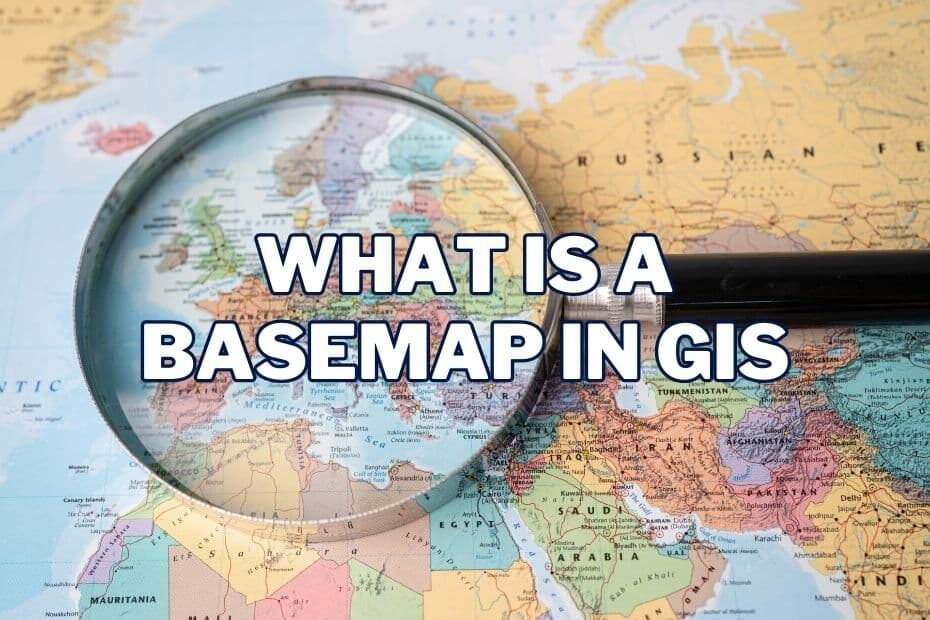Geographic Information Systems (GIS) have revolutionized the way we interact with spatial data, enabling us to analyze and visualize complex relationships between various features in a map. One of the essential components of a GIS is a basemap.
A basemap is a visual representation of the earth’s surface that provides a backdrop for the data layers in a GIS. In this article, we’ll explore what is a basemap, its importance in GIS, and how it can be created and used.
What is a Basemap?
A basemap is a graphical representation of the earth’s surface, typically used as a background for spatial data visualization in a GIS. It serves as the foundation for all other data layers in a map and provides the context and reference for spatial analysis.
The basemap can be a simple map showing political boundaries, transportation networks, topographic features, or satellite imagery.
Importance of Basemaps in GIS
Basemaps are crucial in GIS because they provide essential information about the geographic context of data. They serve as a reference frame for spatial analysis and visualization and help to orient viewers to the location of features in a map.
Base maps also provide a sense of scale and perspective, allowing us to see the spatial relationships between different features and understand their spatial distribution.
How are Base Maps Used in GIS?
Base maps are used in GIS in various ways. They are the foundation upon which all other layers are built, and they provide a reference framework for spatial data. Some of the most common ways base maps are used in GIS include:
1. Orientation
Base maps are used to orientate the user by providing a visual reference for the geographic area being analyzed. They help users to identify the location of features within the context of the surrounding geography.
2. Analysis
Base maps are used in GIS analysis to help users identify spatial patterns and relationships between different features. They provide a spatial context for the analysis, which helps users to understand the underlying geography and how it relates to the data being analyzed.
3. Visualization
Base maps are used in GIS visualization to provide a background reference for the data being displayed. They provide a visual context for the data, which helps users to understand the underlying geography and how it relates to the data being displayed.
Types of Base maps In GIS
Basemaps can be created using a variety of sources, including vector data, raster data, and satellite imagery. There are many different types of basemaps available, each with its unique advantages and disadvantages.
1. Topographic Basemaps
Topographic basemaps show the physical and natural features of the earth’s surface, such as mountains, rivers, lakes, and forests. They are useful for understanding the topography of an area and are commonly used for navigation, resource management, and environmental planning.
2. Street Maps
Street maps are used to show the transportation networks in an area, such as roads, highways, and railways. They are useful for navigation, urban planning, and transportation analysis.
3. Aerial and Satellite Imagery
Aerial and satellite imagery basemaps provide a visual representation of the earth’s surface, captured from above. They are useful for understanding land cover, identifying changes over time, and visualizing the spatial distribution of features.
4. Terrain Maps
Terrain maps are similar to topographic maps but provide more detail on the elevation of the land. They are useful for understanding the relief and slope of an area and are commonly used in environmental planning, resource management, and geologic studies.
5. Political Boundaries Base Maps
Political boundaries such as country, state, and county borders can also be used as a base map in GIS. They provide a reference for administrative boundaries and can be used to analyze population data, voting patterns, and other socio-economic indicators.
6. Hydrographic Features
Hydrographic features such as rivers, lakes, and oceans can also be used as a basemap in GIS. They provide a reference for water bodies and can be used to analyze water quality, flow patterns, and other hydrological data.
Conclusion
Basemaps are an essential component of GIS, providing a background for spatial data visualization and analysis. They enable users to understand the context and reference of spatial data and provide a sense of scale and perspective. By following best practices for creating and using base maps, you can create powerful and informative maps that effectively communicate spatial relationships.
FAQs
What is the purpose of a basemap in GIS?
A basemap provides a visual representation of the earth’s surface that serves as a backdrop for spatial data visualization and analysis in GIS.
What types of basemaps are available in GIS?
There are many different types of basemaps available in GIS, including topographic maps, street maps, aerial and satellite imagery, and terrain maps.
Can multiple basemaps be used in a GIS project?
Yes, multiple basemaps can be used in a GIS project to create a layered effect that enables users to visualize different types of data on top of one another.
Can I use Google Maps as a base map in GIS?
Google Maps can be used as a base map in GIS, but it is important to ensure that the terms of use are followed and that the data is properly attributed.
